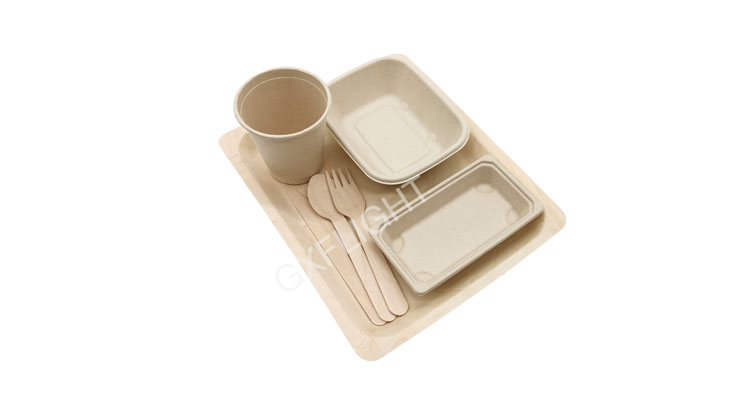
As corporate and consumer awareness of environmental protection gradually increases, the demand for environmentally friendly packaging in the market is growing steadily. It is highly favored and sought after by consumers, becoming the top choice to replace plastic products.
As biodegradability becomes an inevitable trend of development, biodegradable tableware has also gradually replaced traditional plastic products. Observant users might have noticed that the disposable takeaway containers we are using now are changing.
Among them, biodegradable sugarcane bagasse tableware can achieve complete degradation and compostability.
So, do you understand biodegradable sugarcane bagasse tableware?
Biodegradable sugarcane bagasse tableware uses plant fiber from sugarcane bagasse as the raw material. Gxflight's biodegradable sugarcane bagasse tableware is formed through a molding and hot pressing process of sugarcane pulp. Food-grade additives are added to the pulp to make it waterproof and oil-proof, meeting food contact requirements, and the final products are prepared. The fluorine-free series uses fluorine-free oil repellents and meets the BPI certification standards, achieving true complete degradation.
This type of sugarcane bagasse tableware uses natural plant fibers as raw materials, such as straw, bamboo, sugarcane bagasse, etc., and the color of these materials is not necessarily white. Moreover, these plant fibers are rather tough and cannot be completely pulverized.
Therefore, the color of the resulting tableware is slightly darker, not completely white, and certainly not transparent like disposable plastic.
First, let's understand the main raw material, sugarcane.
In terms of cultivation, sugarcane is mainly distributed between latitude 33° north and 30° south, with the most concentrated areas between latitude 25° north and south. Sugarcane originated in India and is now widely cultivated in tropical and subtropical regions. The largest sugarcane growing country is Brazil, followed by India, and China ranks third.
In terms of processing, after the sugar extraction, about 50% of the remaining bagasse fibers can be used for making paper. However, some parts of the pith (parenchyma cells) in the bagasse do not have bonding strength and should be removed before the pulping process. The length of bagasse fibers ranges from 0.65 to 2.17mm, with a width of 21 to 28μm. Although its fiber quality does not match that of wood and bamboo, it is slightly better than rice and wheat straw fibers.
As environmentally friendly products, they should mainly be classified according to their raw materials. Sugarcane bagasse tableware should be classified as recyclable waste. If the tableware contains other components, such as corn starch, it should be classified as dry waste.